Lhasa - Capital of the Tibetan World
Sunday, May 25, 2014
 Lhasa, Tibet Autonomous Region, China
Lhasa, Tibet Autonomous Region, China
Lhasa is the center of the Tibetan world and the number one
attraction in Tibet, probably the biggest highlight of my month Dragoman tour
from Kathmandu to Xian . Situated in a valley at 3,650 meters (about 12,000
feet) Lhasa would vie with LaPaz, Bolivia as the world’s highest city if it
were still an independent country.
Lhasa is very holy place to Tibetans, being the location of
both the Jokhang Temple, the most important in Tibetan Buddhism, and the Potala
Palace, the gigantic hilltop palace in the center of the city from which the
Dalai Lamas ruled the Tibetan world both spiritually and politically. We
visited both, the Jokhang in the morning and the Potala in the early afternoon.
Since pictures aren’t permitted inside either, I only have photos from the roof
of the Jokhang and from outside the Potala.
Stories of the Jokhang’s demise are greatly exaggerated;
whether the reports published in the media several years ago of the Chinese
plan to level the Jokhang for a shopping mall were ever considered or a just a
tall propaganda tale I cannot say. What I can say is the temple is still there,
is full of Tibetan worshippers, and hordes of Chinese and foreign tourists . The
Potala Palace is vast and our guided tour surely only took in the more
important parts of it, but the historical apartments of the Dalai Lama are
especially fascinating, as were the tombs of earlier Dalai Lamas housed in the
complex.
There were many pictures of the previous Dalai Lama;
apparently it’s only the current one in exile the Chinese consider a bad guy.
There’s a very clear level of censorship too. Our Tibetan guide Tsuwan was very
thorough, but on several occasions said “I am not allowed to talk about that”
in response to politically sensitive questions.
I’m not much inclined to go into the political issues
regarding Tibet since I’m no authority on its history, but can write about my
observations. The Chinese push the notion that Tibet was always a part of China
and have even built a whole museum in the Barkhor District with exhibits trying
to prove so, one where things are (unusually) labeled only in Chinese.
Apparently there’s no point in trying to convince English speakers of this
idea . The reality is more complex; Tibet was at times in its history under
Chinese influence but was thoroughly independent at the time of the Chinese
invasion in 1951 after a long era of Chinese weakness. Tibetan territory,
though, was also part of “The Great Game” between Britain and Russia for
influence over the center of the Asian continent at the beginning of the 20th
century. So Chinese notions that foreign powers had designs on what should be
in their sphere of influence were not entirely irrational. Tibet also contains
the headwaters of most of China’s and the rest of Asia’s major rivers so has
substantial strategic importance.
The nature of Chinese repression in Tibet in current times
is subtler than the “cultural genocide” often used to describe it in the West.
It’s true that large numbers of Tibetans were killed during the decades of Mao’s
rule, but millions of other Chinese citizens were too. Presently Tibetans are
able to speak their language (all signs are in both Chinese and Tibetan) and
practice their religion in ways that do not challenge Chinese political
authority, as evidenced by the growing number of monks in the monasteries and
large numbers of people engaged in tradition Tibetan Buddhist practices like
temple visits, prostrations, and kora walks . Supposedly, though, there are many
spies in the monasteries, the major centers of resistance to Chinese rule. On
the other hand, it is true that the conditions are very repressive by Western
standards of free expression of speech, religion, assembly, and political
democracy, but those are the conditions other Chinese citizens live under as
well.
Most Chinese have learned a very censored history and tend
to view Tibetans as ungrateful for the huge amounts of money China spends on
infrastructure, housing, and education in Tibet in an attempt to integrate it
into the rest of the country as well as for strategic regions. Tibet would
likely be a far more impoverished place reliant on foreign aid if it were
independent. As a matter of maintaining a separate culture or integrating with
the majority of China, Tibetans, Uighurs, and other ethnic minorities in China face
dilemmas similar to those of Navajos and Sioux and Chippewas and other
conquered native peoples in North America who were conquered by more powerful
invading forces with dominant cultures .
The Barkhor neighborhood around Jokhang Temple and the
eastern side of Lhasa have a mostly Tibetan population, but the western part of
the city and the outskirts are mostly Chinese and as full of bright lights and
aesthetically unappealing modern buildings as other Chinese cities. Our Sichuan-native
Chinese guide Jason knew I like really spicy food so invited me to go with him
and a friend to a restaurant in the Chinese part of town for Sichuan Hot Pot.
Hot pot is popular in China and consists of a boiling vat of broth in the
center of the table in which the diners cook all the ingredients themselves.
There’s also a little buffet of all kinds of condiments which can be used to
make a dipping sauce for what comes out of the hot pot. Sichuan (or Szechuan)
food is very spicy and relies on Sichuan flower peppers as well as hot chilis
for flavoring. I’ve never found such flower peppers in the U.S. but they’re
common in China and have the strange effect of numbing the mouth, especially if
you accidentally bite on one . The hot pot broth was laced with them and excruciatingly
delicious, even if some of the ingredients Jason order (pork trachea, duck
stomachs, ox tripe, pork kidney, strange mushrooms and funguses) were on the
unusual side.
Most of the food I had in Tibet was really more Chinese than
Tibetan. Being a poor region with a harsh environment where little grows,
Tibetan food tends toward the plain and bland or meaty with dishes like Tsampa (barley
porridge), buckwheat bread and pancakes, yak butter tea, Thugpa and Thantuk (meat
and vegetable soups with either round or flat noodles), lamb and yak meat, and
innards such as tongue and lungs. The steamed dumpling filled with mutton or
yak found all over Central Asia are known as momos in Tibet, and I prefer
non-traditional chicken or vegetable versions of them.
With Tibet being such a frontier and most things there having
to be transported by road, rail, or air a huge distance from elsewhere in China,
food in Tibet is actually quite expensive, as are most things a tourist might
need . So, surprisingly, Tibet is far from being a budget travel destination.
Apparently Chinese working in Lhasa or elsewhere in the Tibet Autonomous Region
have to be enticed there by higher salaries than elsewhere in China.
Lhasa was much warmer than I expected for mid-May with
temperatures in the high 70s F, but I knew we’d be heading back to cold country
pretty soon. On the way out of town we went to a mostly Chinese market not far
from the palace to pick up food for camp meals in the days ahead crossing the
Tibetan Plateau. I went to an overlook across the main road from the palace and
was impressed by the spectacle of massive numbers of Tibetans walking the
morning kora around the Potala.
Other Entries

 Lhasa, Tibet Autonomous Region, China
Lhasa, Tibet Autonomous Region, China
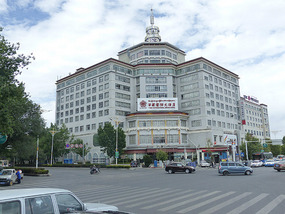
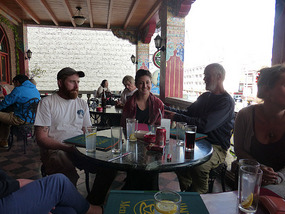
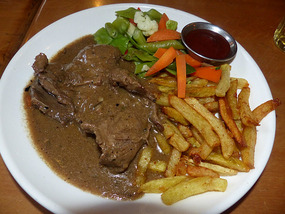
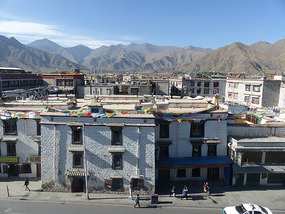
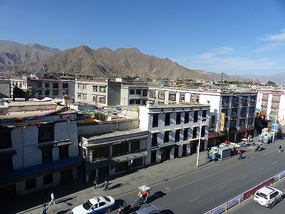
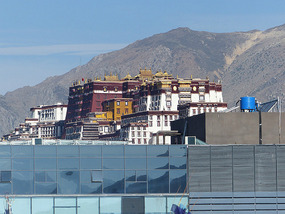


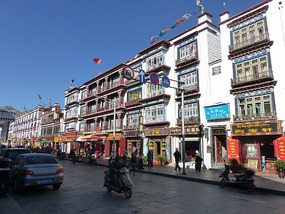
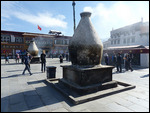
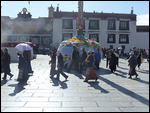
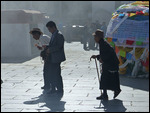
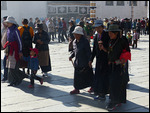
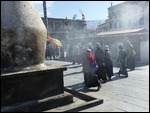

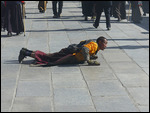
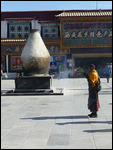
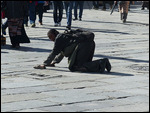

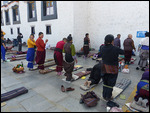
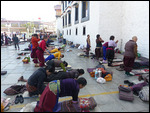
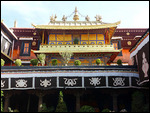
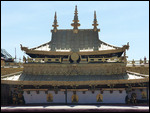

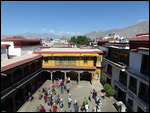
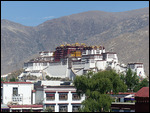
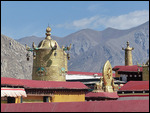
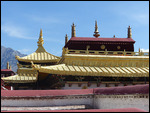
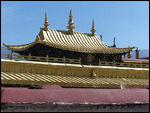
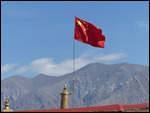

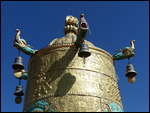
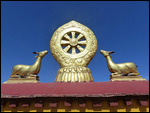
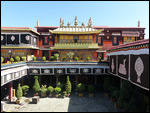
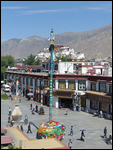
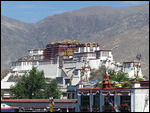
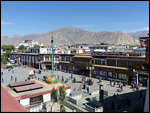

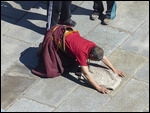
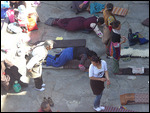

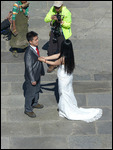
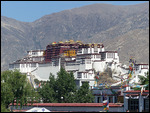
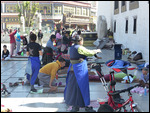
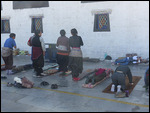
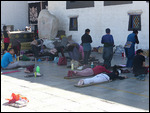
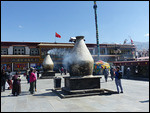
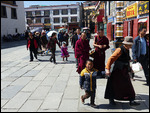
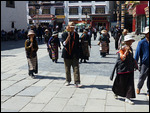
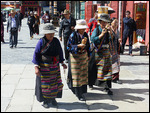
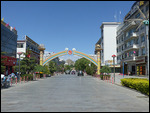
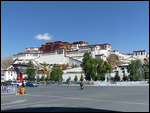
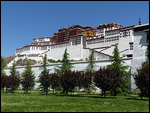
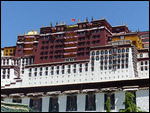
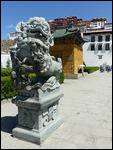
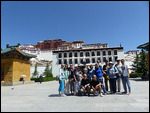
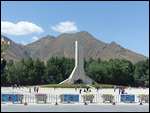

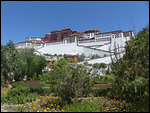
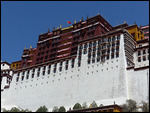
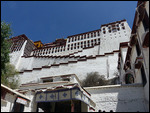
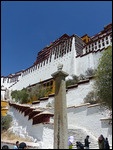
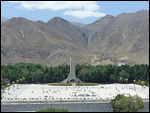
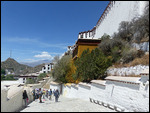

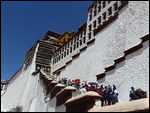
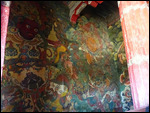
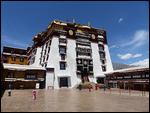
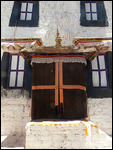
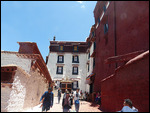
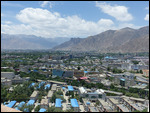
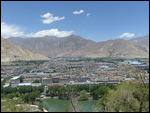
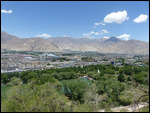
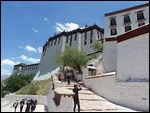
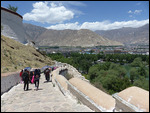
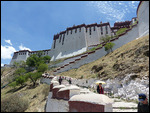
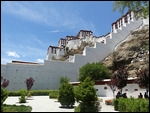
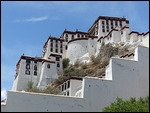
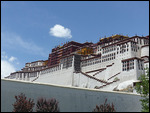
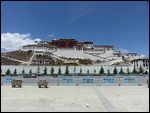

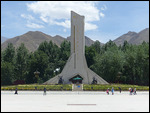
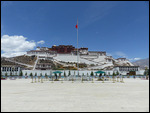
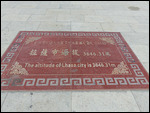
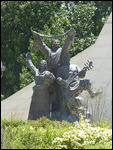
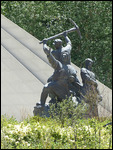

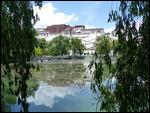
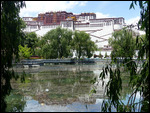
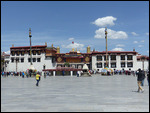
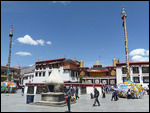
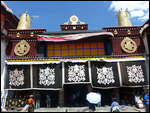
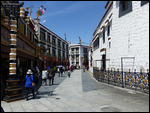
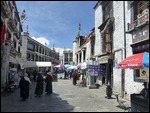
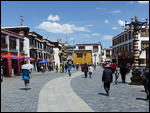
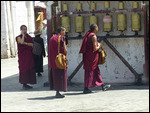
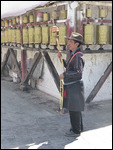
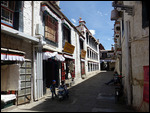
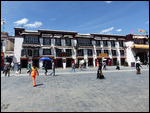
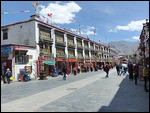
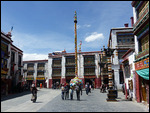
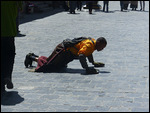

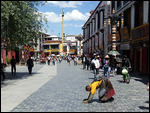
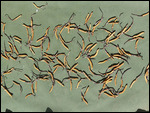
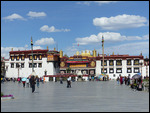
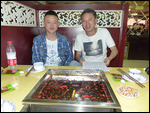
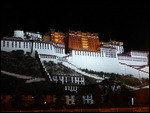
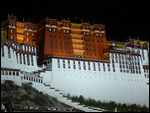
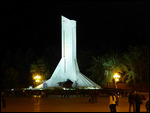
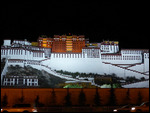

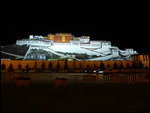

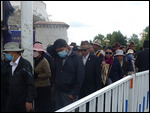
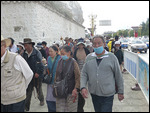
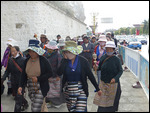
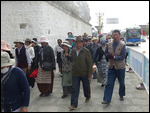
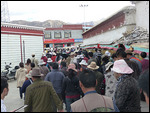
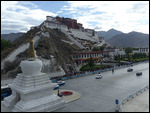
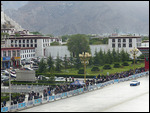
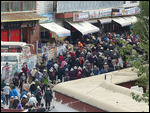
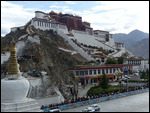
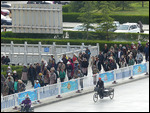

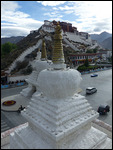
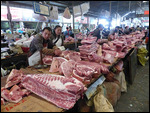
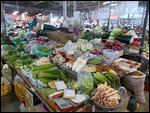
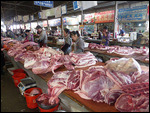
2025-05-22